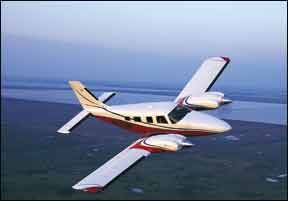Most piston twins have carved themselves a market share for a few years, then vanished as market conditions changed. Piper’s Twin Comanche and Aztec are examples and so is the Beech Travel Air, Duke and Duchess. On the other hand, for various reasons, some twins have endured and Piper builds two of them, the Seminole and the Seneca. Both have endured for various reasons, although neither is made in much volume these days.
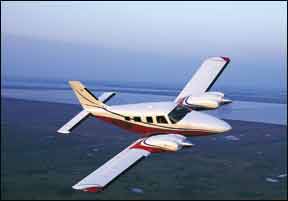
It’s easy to see why the Seneca has endured. It does nothing exceedingly well—it’s not fast, nor a joy to fly nor will it turn heads on the ramp—but it does a lot we’ll enough.
It’s affordable to buy and maintain, carries a good load and flies without any nasty habits. There are plenty of used examples on the market and airplane remains popular as a multi-engine trainer, but it’s not the sort of airplane anyone who learned in will want to immediately ditch in favor of something sexier.
In short, it’s an entirely reasonable airplane. That, more than anything, may explain why the Seneca endures in Piper’s line. It’s one of only four twins still in production—the others being the Baron, Piper’s own Seminole and new-age Diamond Twin Star.
The History
All modern manufacturers are known for so-called “parts bin” engineering—stretching the parts and pieces of one model into another, something that makes perfect sense. But few have been as good at it as Piper has. The Cherokee line begat the Cherokee Six, the Six the Saratoga and the Saratoga the Seneca. Saw off the wings of a Seneca and a Cherokee Six and you couldn’t tell the two apart. The Seneca first appeared in 1971, when GA was still a going industry and there was actually headroom for new twins. At the time, the Aztec—a good seller for Piper—and the Comanche were growing long in the tooth and Piper needed something new. The Seneca had counter-rotating Lycoming IO-360C1E6 engines producing 200 HP each and at its introduction, it cost about the same as the Twin Comanche C/R, but had larger engines, higher gross weight and a roomier cabin with a rear door that the Twinkie lacked. In other words, it was cabin class comfort for about $63,000 equipped.
Both the Seneca and the Twin Comanche were built in 1972 but when Tropical Storm Agnes pushed the Susquehanna River into Piper’s Lock Haven works, the Twin Comanche drowned with it and the Seneca was moved to Piper’s new Florida operation. Piper built 360 Senecas that year, a good start in the twin market where the competition was the Cessna Skymaster, which sold poorly in 1972. In three years, Piper sold 933 Seneca I’s, dramatically outdoing the Aztec and Comanche.
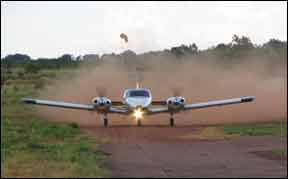
Part of this was due, no doubt, to Piper’s decision to modernize the airframe. It dumped the Comanche’s Byzantine plumbing, favoring a fuel system with only three positions: on, off and crossfeed. Since the airplane had counter-rotating props, there was no worry about critical engines, either. The Seneca was based on the wildly successful PA-32 series with a long and wide cabin, true seating for six, a big aft door on the left and a cockpit door on the right. Since passengers don’t like climbing over wings, this design proved a favorite among charter operators and for owners with big families. It still does. And despite its boxy shape, Piper applied some styling touches to make the aircraft fairly attractive. Early interiors, apart from that unfortunate Velour upholstery, were also a step up from early efforts. The modern Seneca V has dropped one of the seats in favor of an optional entertainment/refreshment center.
The original Seneca I was a good start, but it was lacking, too. Pitch stability wasn’t the best and the controls were on the heavy side—Bonanza pilots wouldn’t like it much. The airplane also had noticeable Dutch roll in turbulence, which would tax the stomachs of the backseat pax. There were design and production issues, too, that led to a lot of ADs. Records indicate that the original Seneca is subject to 47 ADs, counting the shotgun ADs that apply to most airplanes; a dubious record.
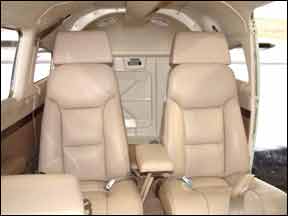
To its credit, Piper didn’t sit still. It corrected the Seneca’s handling and noise/vibration shortcomings. The ailerons were changed to a modified Frise design and made larger. The engine mounts were changed and soundproofing was added. Piper also changed some of the weights to give pilots the option of carrying more weight or more fuel. Gross was increased from 4000 to 4200 pounds. The increase carried with it a price, of course. Single-engine performance at the higher gross weight was marginal, at best. Single-engine rate of climb sank from 230 FPM to 190 FPM and single-engine ceiling from 5200 feet to 3650 feet. Piper also introduced a new limitation: a zero-fuel weight of 4000 pounds, meaning that any weight over 4000 pounds had to be in fuel, not payload.
Seneca II
With a strong if not a hot seller on its hands, Piper continued to improve the Seneca with the PA-34-200T Seneca II. More changes were made to the control system to improve handling. The aileron/rudder interconnect was removed and with it went some control heaviness.
The rudder gained an anti-servo tab and the stabilator was changed with the addition of a bobweight. The ailerons were increased in span and balanced for lighter effort. This time, the changes worked and no major alterations were made after that.
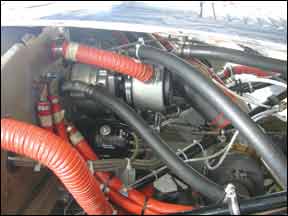
But the big performance change for the Seneca II came in the powerplants, with the four-banger Lycs giving way to six-cylinder turbocharged Continental TSIO-360-E engines with fixed waste gates. Rated at the same 200 HP at sea level, they produced 215 HP at 12,000 feet. Flying high and fast is nice, of course, but twin drivers worry more about high-altitude engine-out performance. Here, the Seneca II was a different beast entirely.
Single-engine climb rate improved to 235 FPM and single-engine ceiling more than tripled to 13,400 feet. Initial recommended TBO was the same 1400 hours. In 1977, this was increased to 1800 hours and owners report that with careful operation and maintenance, this is realistic.
The airplane got a higher gross weight, too, increasing by 370 pounds to 4570 pounds. However, the zero-fuel weight stayed at 4000 pounds, so the benefit was a mixed blessing. And another limiting weight was introduced: a maximum landing weight of 4342 pounds. Once again pilots were given more flexibility and more ways to get into trouble if the loading limits weren’t obeyed.
With the improved controls and engines, the Seneca II also got optional extended-range fuel tanks that increased usable fuel from 93 to 123 gallons. The campaign against noise and vibration continued with the addition of a three-blade prop option, which weighed 46 pounds.
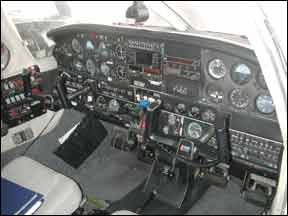
The popular club seating option was also introduced, as was a Janitrol heater and optional fan to move heated or ambient air through the cabin. In later years, some system changes and options were added, such as a priming system to make engine start easier, optional more powerful brakes, modifications to the instrument panel and air conditioning. In 1980, a built-in oxygen system was offered.
Seneca III
By the late 1970s, with sales still strong, Piper began overhauling its entire model line, introducing the tapered wings and had a fling with T-tails in Arrows and Lances. The 1981 Seneca III was supposed to have the same T-tail and tapered wing as the Lance, but Piper found that the flying qualities weren’t as good as the company had hoped. The configuration was left unchanged. There were still significant changes to the Seneca III, however. A different variant of the Continentals was used, with 220 HP each. These engines had a higher RPM limit (2800 vs. 2575 RPM). This, combined with fuel scheduling, resulted in maximum power of 220 HP, albeit time-limited to only five minutes.
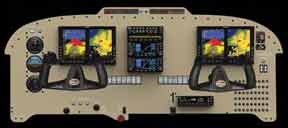
Continuous rated power was still 200 HP. Single-engine rate of climb improved marginally to 240 FPM and all-engine rate of climb went from 1340 to 1400 FPM. However, most other performance figures, such as runway required, declined somewhat due to a further increase in allowable weights, the unavoidable bugaboo of every manufacturer.
The new weight limits were made possible by reinforced structure. This time, the zero-fuel and landing weights were raised as well. Maximum takeoff weight was now 4750 pounds, zero-fuel weight 4470 pounds and max landing weight 4513 pounds. The pneumatic system (for air-driven instruments and optional de-ice system power) was changed from a pressure to a vacuum system in 1981. According to Piper, this improved mean time between pump failures from an average of 400 hours to more than 700 hours. Owners say that in the field, the pressure pumps last about the same as vacuum pumps.
Other changes to the Seneca III included a new panel, one-piece windshield and a switch to electric flaps. We’ve always been fans of manual flaps: They’re simple, positive and hard to break. The move to electric flaps was required because of a change to larger flaps, which resulted in high actuation forces. Amazingly, the Seneca never went out of production, even during Piper’s troubled times in the late 1980s and early 1990s. Admittedly, production was down to a trickle (four were built in 1992), but it stayed on the price lists. And it’s still there.
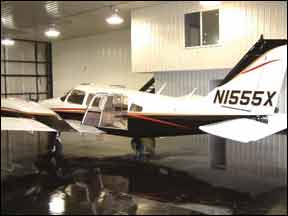
As Part of Piper’s Transformation
into New Piper, the Seneca was revamped yet again, being redubbed the Seneca IV and lately, the V. Relatively few changes were made, the most notable being new cowlings that result in higher speeds. Also, the interiors have been markedly improved in recent models. Along with these improvements come much higher prices: When the Seneca IV was introduced in 1994, it sold for about $425,000. A new Seneca V retails in the $899,000 range, with Garmin’s G600 glass panel.
Performance, Loading
All of the Senecas offer fairly good short-field performance and sea-level fields of 3000 feet or so are no problem as long as both engines are turning. As noted above, however, later versions are better once airborne. Of all the light twins, the Seneca is among the most benign in the runway environment.
It’s not a fast airplane, however. The normally aspirated early models cruise in the 160- to 170-knot range at 65 percent and 10,000 feet. Limiting speeds are low: 129 to 130 knots for gear extension; 138, 121 and 107 knots for 10-, 25- and 40-degrees flaps, respectively. One owner we spoke to highly recommends that speed brakes be fitted. The turbocharged models are, of course, quite a bit faster, especially when taken high. Owners report cruise speeds in the 180-knot or faster range in the high teens and low flight levels on typical fuel flows of 24 to 28 GPH.
The later Senecas are decent haulers. Loading the Seneca is about as easy as it gets. The fuselage is low to the ground, allowing rear passengers to climb on board easily and the rear seats are easy to remove. The two baggage compartments have weight limits of 100 pounds apiece. The generous CG range permits flexibility in seat selection and the later models were equipped with a clever visual slide-rule type CG computer, which makes loading a snap.
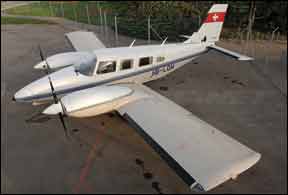
Owners tells us that early Senecas have useful loads in the 1200- to 1300-pound range while the Seneca II averages closer to 1500 pounds, with its higher gross weight of 4570 pounds. The latest iteration, the Seneca V, has regressed due to higher empty weight, with useful loads in the 1300- to 1400-pound range.
Cabin and Comfort
With its four-foot-wide cabin, adequate seating for all but the biggest of six people, and ample windows, the Seneca is long on comfort in comparison to most other piston-powered airplanes in this class. Although the club seating often yields a tangle of legs in the rear cabin, it’s still appreciated by passengers, according to owners who have contacted us. Given its payload, the Seneca is a good five-person airplane with some baggage or a four-person airplane with a lot of baggage, stowed in either the nose compartment or behind the rear seats in the cabin.
Flight visibility from the cabin is adequate but not exceptional. The big windows are nice but up front, the large engine nacelles extend forward of the wing leading edge, blocking horizontal and downward visibility.
This, coupled with the wide-chord wing, makes spotting traffic below the airplane difficult. Heating and ventilation are typical Piper, with overhead and floor vents that provide enough air in most circumstances. Seats are also typical Piper, which is to say reasonably comfortable but with a tendency to sag and wear with use. Most owners recommend overhauling them.
Mods, Owner Groups
Senecas, beginning with the II, came with fixed wastegate turbochargers. These are relatively simple and inexpensive to manufacture, but at the cost of efficiency as we’ll as longevity and a tendency to overboost due to sensitive throttle response. Owners say a must-have mod is to fit the engines with Merlyn automatic upper deck air controllers. We’ve heard good reports about these mods and other owners tell us intercoolers can also help. (Contact www.merlynproducts.com or 509-838-7500.)
Due to the low speed restrictions, speedbrakes are a good investment, particularly in heavy traffic areas. Precise Flight makes a set for $4995. Contact: 800-547-2558. For Seneca I owners who want turbocharging, the old Rajay is found on used models but no longer installed. TradeWind Turbines (806-852-7232) may have parts.
Seneca II and III owners can improve their turbos with Turboplus intercoolers in kit form. Contact www.turboplus.com or 888-514-4514. Although the takeoff and landing numbers on the Seneca are decent, those who want better performance can invest in Sierra Industries’ R/STOL kit. Call for pricing and expect a long lead time. Contact: 888-835-9377 or www.sijet.com for more information.
Hartzell Propeller had an aggressive program to install three-blade propellers on the Seneca II and III. The STCs can replace either two-blade Hartzell or three-blade McCauley propellers. The three-blades offer better takeoff and initial climb and also eliminate the RPM/MP restriction applicable to the two-blade propellers. Contact Hartzell at www.hartzellprop.com or 937-778-4200. Although the props are still available, the deals may not be. Check with Hartzell to find out.
The Piper Owner Society supports Seneca buying and ownership and is a good general resource for Pipers of all sorts. Contact 866-697-4737 or www.piperowner.org. Another group is the Piper Flyer Association at www.piperflyer.org or 800-493-7450.
Owner Feedback
I have owned a Seneca II since 1978, when I purchased it new. It now has 3445 hours on the airframe and it runs great. The factory reman TCM TSIO-360 engines (TBO 1800) have 1405 hours on them, the compressions are still OK and they burn one to two quarts of oil every 50 hours.
At every oil/filter change, I add a can of AvBlend and a bottle of Lycoming additive. Oil analysis at each change reveals all to be normal. I’m the only pilot and there is no deferred maintenance—all SBs have been complied with except for replacing the aluminum battery cables with copper ones.
Annuals run $4200, unless there’s a surprise. The most recent annual cost $5316. Aside from oil changes and repetitive ADs, unscheduled maintenance can easily run $3000 to $5000 a year. For example, I just had the wing rib SB done for about $3600. Hangar rental at Napa, California, runs $242 per month. Annual insurance for a hull value of $145,000 and $2 million smooth is $6464.
The panel is pretty much stock Collins Micro-Line, with the exception of a VFR Magellan SkyNav 5000 GPS and a marine radio. Airframe mods include nacelle-mounted recognition/taxi/landing lights and a full Robertson STOL kit. This STC replaces the manual flaps with full-span semi-Fowler electric flaps, spoilers (vs. the stock ailerons) and extended/drooped wingtips. It lowers the VMC and stall speeds by at least 12 knots and dramatically improves the short-field and single-engine capabilities. I installed Merlyn Black Magic upper-deck pressure controllers and they work as advertised, with five percent more power or five percent less fuel flow.
The cabin is quiet enough inside for normal conversation, but I installed a PS Engineering 1000 ICS in 1994 to improve things for my aging ears. I have only two gripes about the airplane itself: The landing gear extension speed is 129 knots indicated, mostly due to the flimsy gear doors and the prop clearance with stock two-blade McCauleys is only 10½ inches. The newer replacement three-blade props have the same 76-inch diameter, so there’s no help there.
Although it’s a good load-hauler, I’ll drive my truck or pay somebody to transport bulky items. I am seriously considering getting a partner or trading the airplane for a recent manufacture high-powered composite fixed-gear single that has modern avionics and costs less to maintain and insure.
However, if the Draconian user fees go into effect as proposed, I may just say to hell with flying altogether. I just turned 60, have been flying for almost 40 years, 5000-plus hours, USMC, Vietnam FAC and so on, but I’m not that big of a curmudgeon. Still, it’s no wonder that the numbers of active and student pilots continue to decline.
Gordon Evans
Via e-mail
As an MEI and former owner of a Seneca V, I have a lot of familiarity with the model. I purchased my 1997 Seneca V in 2003 and sold it in 2006. My discussion encompasses only older Seneca Vs before the recent upgrade to Avidyne glass cockpits.
Expenses during that time amounted to approximately $64,000 in repairs, inspections and parts. Based upon the hours flown, this amounted to $80 per hour. Keep in mind that these expenditures were more than average due to the fact that the rental/training operation required 100-hour inspections in addition to annuals. Fuel amounted to about 25 gallons/hour. At $4.50 per gallon, this comes to an additional $112 per hour. Add to this the cost of engine, prop, paint and avionics reserve of about $50 per hour and the total direct operating costs were about $240 per hour.
The aircraft is very dependable and I was just about never grounded. There is the occasional failure of a magneto, alternator or vacuum pump. The aircraft is quite capable of operating on a single vacuum pump or alternator (VFR) as there is no lack of vacuum nor loss of electric.
The POH book speeds for Seneca Vs are fairly reliable as these aircraft are not that old. Due to turbocharging, the higher you fly, the faster you go. Many Seneca Vs have built-in oxygen. For me, flying in the highest non-oxygen levels (10,000 to 12,000 feet) resulted in about 185 knots at high-speed cruise on 13 to 14 gallons per side. Most people fly at lower settings for more economical fuel. You can substantially increase the range by using the long-range economy setting of 25 inches MAP/2200 RPM. This results in a fuel burn of only 9 to 10 gallons with a speed of about 155 knots.
Loading varies a lot on Seneca Vs, and the worst are those with boots, air-conditioning and deice. Generally, the aircraft are capable of flying three to four people with full fuel. Seneca III’s have significantly higher useful loads—about 200 pounds on average.
Many of the older Senecas have club seating in the cabin. If you are redoing the interior and it is not currently club seating, you can modify it to that configuration with any Seneca model, except perhaps in a Seneca I.
There’s no doubt that the Seneca is a very comfortable and reliable aircraft. Some of the drawbacks are lack of payload, range and space. Although it seats six, it is not comfortable with six adults. It’s more like four adults and two children at most.
Jeffrey Feldman
www.daystarair.net

